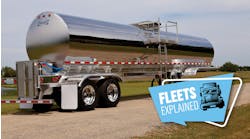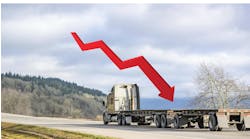Fuel cells are lowering the emissions limbo bar almost to the floor, and raising hopes for the future
Walk with a Mercedes-Benz researcher out to the Test Track at the Untertuerkheim Plant near Stuttgart, Germany, to see the fuel-cell driven NEBUS (New Electric Bus), and you are almost guaranteed to come back converted to fuel cell technology yourself. The 52-passenger bus is persuasively quiet, comfortable, efficient, and clean. Best of all, distilled water and heat are its only emissions.
The NEBUS is the result of collaboration between fuel cell manufacturer, Ballard Power Systems Inc. of Burnaby, B.C., Canada, and Daimler-Benz AG, specifically Daimler-Benz Research, the Mannheim Omnibus Div., and the companys Competence Center for Emission-Free Commercial Vehicles. Like the experimental NECARs that preceded it, the NEBUS converts hydrogen and oxygen to electrical power.
And how on earth does it do that? In a process Merlin would be proud of, hydrogen (H2) and oxygen (O2 ) are fed into a Proton Exchange Membrane (PEM) fuel cell, which is comprised of graphite plates sandwiched around a solid electrolyte with a proton-conducting plastic membrane. The membrane is coated with a platinum catalyst and an electrode made of gas-permeable graphite paper. The catalyst starts an electrochemical reaction between the hydrogen and the oxygen within the cell, generating direct current. In the case of the NEBUS, this current goes right to a system of electric motors located close to the bus wheels that transmit power directly to the wheels.
The hydrogen required for this amazing feat of electrochemistry can be derived from conventional fuels like oil, gasified coal, liquid propane, and natural gas. What makes it so promising as an energy source, however, is that it can also come from any other hydrogen-rich material, such as waste gases generated at landfills and water pollution control facilities, or plant matter (methanol, ethanol). Fuel cells can even use hydrogen from solar, wind, or geothermal sources.
According to the Union of Concerned Scientists, most regions have the potential for producing significant quantities of hydrogen from one or more of these sources, so hydrogen can be made locally. ... And when produced from [certain] renewable sources, hydrogen is nonpolluting everywhere in the fuel cycle, from production to end-use.
Methanol as a source of hydrogen is currently of particular interest to Daimler-Benz because its obtainable from renewable raw materials and its liquid at room temperature. As such, it could be used to fill up vehicles at conventional gas stations, the company notes. The high efficiency of fuel cells more than compensates for the lower energy content of methanol in comparison to gasoline or diesel fuel.
This is far more than blue-sky talk. Daimler-Benz AG and Ballard Power Systems Inc. along with Ford Motor Co., formed a global alliance in April whose goal is to be the worlds leading commercial producer of fuel-cell powered drivetrains and components for trucks, cars, and buses. Together, the companies have a total investment in the alliance of over a billion dollars (Canadian), according to Ballard. And theyre not alone. More than 50 other companies are also working with fuel cells.
The push to bring fuel cell technology as well as other green energy solutions to the commercial marketplace is praiseworthy. It also makes excellent business sense. As Stuart Hart observes in Beyond Greening: Strategies for a Sustainable World (Harvard Business Review, January-February 1997), few executives realize that environmental opportunities might actually become a major source of revenue growth. ... The achievement of [a sustainable global economy] will mean billions of dollars in products, services, and technologies that barely exist today.
If Hart is right, then trucking will become one of the first industries through the doorway to this business future via proactive environmental endeavors such as bringing fuel cell technologies to the marketplace. In its efforts to get down to zero emissions, in other words, trucking may go up to the role of a business world leader.


